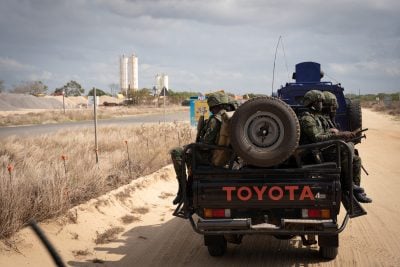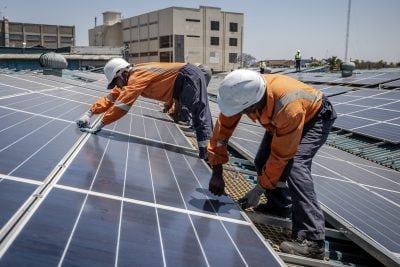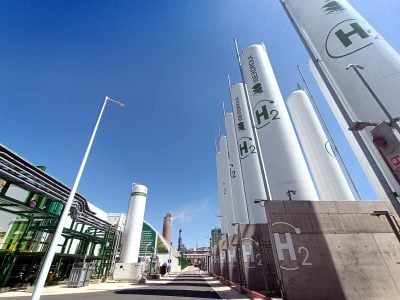The government of South Africa seems keen to proceed with the development of industrial development zones (IDZs). The landmark Coega IDZ in the Eastern Cape has not thus far yielded the benefits originally envisaged but neither has it been regarded as a failure.
While a number of medium-sized automotive component manufacturers and processing enterprises have started operating at the site, agglomeration in the global aluminium industry and the global economic crisis saw plans for an aluminium smelter shelved. It had been hoped that the smelter would developed as an anchor tenant for the project.
However, another element of the venture has proved to be more successful. The port of Ngqura at the centre of the Coega IDZ has found a role as a transhipment port for the entire Southern African region. The modern container terminal has two berths and handling capacity of 800,000 TEU a year, and in November operator Transnet announced that it would develop two new berths, taking total capacity up to 2m TEU a year. With a depth alongside of 18 metres, the port is capable of handling post-Panamax vessels; that is, ships too large to pass through the Panama Canal.
Another IDZ, the country’s fifth, is planned for the Atlantic port of Saldanha. Trade and Industry Minister Rob Davies has revealed that a firm decision on the Saldanha IDZ will be taken during the first quarter of 2012. The port currently relies on iron ore exports but Transnet believes that export-orientated businesses could take advantage of its position as the South African port located closest to markets in Europe and North America. The government hopes that Saldanha can learn from the experience of other IDZs at Coega, Johannesburg airport and Richards Bay.
Coega also featured prominently in some of the other new projects announced by Transnet during the final quarter of 2011. The parastatal has decided to construct its new manganese export terminal at Ngqura rather than Saldanha in the Northern Cape. Apart from the port facility, a new rail corridor will be developed from northern mining centres to Ngqura. Saldanha will therefore continue to concentrate on handling iron ore exports.
In addition, Transnet is to construct two new railways to support the nation’s coal industry. One will run from the heart of the South African coal industry in Mpumalanga Province to KwaZulu-Natal through Swaziland. It will provide a new route to Mozambique’s Matola Coal Terminal and also provide more capacity to Richards Bay Coal Terminal (RBCT). Finally, another coal line will be constructed from the Waterberg Basin in Limpopo Province to RBCT, enabling the development of mines in what is expected to become a major new coal mining centre.
Construction and infrastructural investment in Mozambique is not limited to its connections with South Africa. Mozambique’s booming coal sector will have profound implications for both the country’s economy and for global coal markets. The government forecasts that exports could reach 100m tonnes a year within a decade, substantially more than South Africa currently achieves. Dedicated coal export terminals are planned for both Beira and Nacala, while the existing Matola Coal Terminal is being expanded to handle South African exports.
However, two other terminals are planned on greenfield sites. One would be constructed at the mouth of the River Zambezi and would provide an outlet for coal mined in the Moatize Basin in Tete Province in the far northwest of Mozambique. Coal could be transported to the port by barge down the Zambezi but a new 500km railway has also been mooted. The initial phase of the port would provide handling capacity of 25m tonnes a year.
The other terminal at Techobanine in the far south would be developed to handle mainly Botswanan exports with an option for South African coal. However, the port and the railway line connecting Techobanine with the Botswanan mines may not be constructed if a rival railway to the Namibian port of Walvis Bay is selected instead.
Combined rail and port projects are also being developed on the opposite side of Southern Africa, in Angola. Three rail lines to west coast ports are being redeveloped, while a combination of private and public money is funding the redevelopment of existing ports. Luanda container terminal has been upgraded by a consortium including APM Terminals (40%) and Maersk (11%) but the country’s main container centre is likely to be constructed north of the capital, at Barra do Dande, on a greenfield site
Want to continue reading? Subscribe today.
You've read all your free articles for this month! Subscribe now to enjoy full access to our content.
Digital Monthly
£8.00 / month
Receive full unlimited access to our articles, opinions, podcasts and more.
Digital Yearly
£70.00 / year
Our best value offer - save £26 and gain access to all of our digital content for an entire year!
 Sign in with Google
Sign in with Google 


